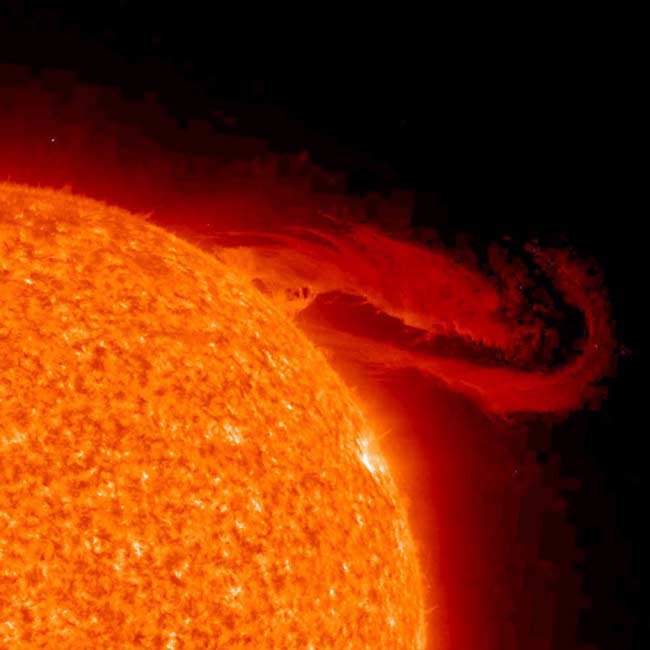NASA Sees Far Side of the Sun

NASA's twin STEREOspacecraft are offering the first glimpse of the far side of the sun, the spaceagency announced today.
The two spacecraft,launched Oct. 25, 2006, are beaming back over-the-horizon images "thathave researchers and forecasters glued to their monitors," according to astatement.
"This is a perspectivewe've never had before," says STEREO mission scientist Lika Guhathakurtaof NASA headquarters. "We're now monitoring more than 270 degrees of solarlongitude - that's 3/4ths of the star."
Just in time
Because the sun rotates,all of it is seen from Earth over time. But at any given time, only half of thestar is visible. Scientists who monitorsolar eruptions and the space storms they hurl toward Earth are eager tomonitor the whole star 24/7. Seeing storms on the far side, which is of coursejust as bright and active as the near side, would improve forecastingabilities.
"After all these years,"Guhathakurta quipped, "we're finally getting to see the dark side of thesun."
Since the two STEREOspacecraft went into orbit around the sun at the beginning of 2007, they havebeen slowly drifting apart from Earth, and from each other. They are now 90degrees apart. They will be in their final positions on Feb. 6, 2011, hovering180 degrees apart and imaging the entire sun all the time. That timing willmatch with the next expected peak in solar activity.
Get the Space.com Newsletter
Breaking space news, the latest updates on rocket launches, skywatching events and more!
The sun is at a low pointin it's 11-year cycle of activity now. But over the next few years, sunspotswill become more common and flaresmore frequent. The peak will likely occur in 2012.
Dangerous solar storms canhappen anytime, however. A major one, thought to occur every 100 years or so,could debilitate communication and power systems on Earth, according to aNational Academy of Sciences reportearlier this month.
Already better
Because of the way the sunspins, STEREO-B gets a sneak preview of sunspots and coronal holes before theyrotate around and face Earth.
"I know forecasters atNOAA's Space Weather Prediction Center monitor STEREO-B very closely,"said Chris St. Cyr of the Goddard Space Flight Center. "It lets them knowwhat's coming."
Already, STEREO-B enjoys a3-day look-ahead advantage over Earth-based observatories.
No images were releasedtoday. However, the probes are equipped with sensors that measure the speed,direction and composition of the solar wind; receivers that pick up radioemissions from explosions and shock waves in the sun's atmosphere; telescopesthat image the solar surface and all the tempests that rage there; and coronagraphsto monitor events in the sun's outer atmosphere.
"So, really,"says Guhathakurta, "we're not only seeing the sun's dark side, we'refeeling, tasting and listening to it as well."
- Gallery: Solar Storms
- Video - Space Storm Warning
- Perfect Space Storm Could be Catastrophic on Earth, Study Concludes
Join our Space Forums to keep talking space on the latest missions, night sky and more! And if you have a news tip, correction or comment, let us know at: community@space.com.

Space.com is the premier source of space exploration, innovation and astronomy news, chronicling (and celebrating) humanity's ongoing expansion across the final frontier. Originally founded in 1999, Space.com is, and always has been, the passion of writers and editors who are space fans and also trained journalists. Our current news team consists of Editor-in-Chief Tariq Malik; Editor Hanneke Weitering, Senior Space Writer Mike Wall; Senior Writer Meghan Bartels; Senior Writer Chelsea Gohd, Senior Writer Tereza Pultarova and Staff Writer Alexander Cox, focusing on e-commerce. Senior Producer Steve Spaleta oversees our space videos, with Diana Whitcroft as our Social Media Editor.









